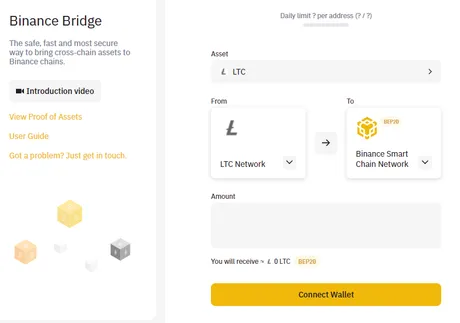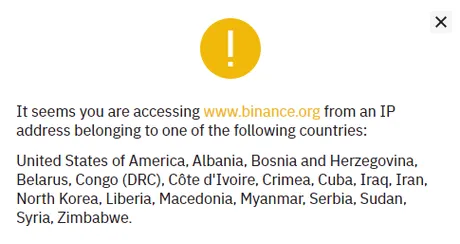
ERC20 : BEP20 Bridge
Interestingly enough, the bridge already exists. This is what will allow us to bring it to market so quickly. We already have the infrastructure to make all these moves manually. The frontend of the bridge will simply simplify the process to a one-click solution that anyone can use.
As it stands now, anyone can use what we've created here to transport value from the Ethereum main-net to Binance Smart Chain. The problem is that there are a lot of steps involved, and anyone that doesn't know about LEO cannot participate. Not only do users need to have knowledge of LEO to use the bridge, they also have to have a Hive account to unwrap/wrap LEO to the new chain. These barriers to entry are unacceptable, and that's why the bridge is being streamlined in this way.

How many steps are involved?
-
Trade ERC-20 for wLEO. This involves multiple trades on Uniswap due to liquidity issues. LEO's main source of liquidity on Ethereum lies in the wLEO/ETH pair, so the only way to get wLEO with an ERC-20 token is to first trade that token for ETH. That requires at least two trades (three if the ERC-20 token in question doesn't have a direct pair to ETH).
-
Unwrap wLEO to LEO Again, this requires a Hive account and costs yet another ETH fee. Anyone who doesn't have a Hive account and doesn't know how this all works gets cut out from the service.
-
Wrap LEO to bLEO (same logic as above)
-
Trade bLEO for BEP-20 (again, multiple routes)
Wow, that's a lot of fees :(
Yes, so so many fees:
- 0.25% fee just to use the bridge (burns LEO/CUB)
- 0.3% Uniswap fee for ERC-20 >> ETH
- One ETH transaction fee
- One slippage fee
- 0.3% Uniswap fee for ETH >> wLEO
- One ETH transaction fee
- One slippage fee
- One more ETH transaction fee to unwrap wLEO to LEO
- Another BSC transaction fee to wrap LEO to bLEO
- 0.2% Pancakeswap fee for bLEO >> BNB
- One BSC transaction fee
- One slippage fee
- 0.2% Pancakeswap fee for BNB >> BEP-20
- One BSC transaction fee
- One slippage fee
Holy shit! 15 fees!
In fact, I just realized we have to add two fees:
- One Eth transaction to send ERC-20 to the bot.
- One BSC transaction for the bot to send BEP-20 to the user.
In order for this to be a one-click solution a bot has to be in charge of the money the entire time to automate the process. That brings the total number of fees of the bridge to 17. Yikes!
YEP! It will costs hundreds of dollars to use the bridge one time.
Who the fuck would ever use this?
Hm, yes, I was thinking the same thing, except it already costs hundreds of dollars to do anything on ETH right now. Want to compound the gains of a yield farm? Well you have to harvest the farm, sell half, enter the LP, and then enter the farm. That's already at least 4 Ethereum transactions right there. Even though the CUB bridge is going to be expensive as hell it's going to provide an exit off of the Ethereum mainnet so users can finally get x100 cheaper fees every day on BSC. I call this the "Ragequit Effect".
The bridge allows us to utilize our current infrastructure in a new and interesting way while providing a service in dire need. One of the main reasons the bridge needs to exist is due to regulations that tie one arm behind Binance's back. They are being forced to IP-block Americans by the regulators.
It's quite obvious that no matter how many times I tell people just to use a VPN, this problem is only going to get worse. I can see it in the chatrooms, social media, and on-chain over and over again: How do I get funds onto BSC. This bridge is the key for a lot of people.
Paying for convenience
In the world of crypto, convenience and user experience (UX) are treasured assets. It could seriously take someone hours just to figure out how to move funds from ETH to BSC, and there are multiple ways in which users can screw up and lose all their money. By automating the process we provide a lot of value to users and save a lot of time, hassle, and fear.

What happens if Cub gets slapped by regulators?
If the bridge gets big enough, what stops the SEC from coming after us just like they do with all the other centralized exchanges? That's the magic of open-source code. Theoretically the code for this bridge bot could be accessible to all, and if Khal was ordered to stop providing the service he could just get someone else to do it in another country. Once dozens of nodes are all providing the same service it will become obvious to regulators that oops, this thing can't be regulated. That's decentralization for ya.
Liquidity is key
In order for the bridge to have less slippage costs we need to have a lot of liquidity. That means the wLEO/ETH pool and the bLEO/BNB pool are going to be very important moving forward.
Users migrating from ETH to BSC will be buying wLEO and unwrapping it, while selling that bLEO on BSC to get their original token back. This will push up the price of wLEO and drive down the price of bLEO, creating many arbitrage opportunities.

Binance bridge
Essentially the Binance bridge and the CUB bridge will look very similar on the front-end, but work completely differently on the backend. On the frontend, both send value to a bot that wraps it to the new chain. On the backend, Binance pegs tokens using hot/cold wallets. The fees are much cheaper, but there is one important distinction:

Honestly when I read this message it get offended. What am I? A child? Is my country the victim of sanctions? Nope, just out-of-touch regulators flexing their muscles when they shouldn't be. It's hilarious and sad that this can all be avoided with a VPN, but most users feel like this is breaking the law when it very clearly isn't. Remember, it's not against the law for citizens to make transactions like this: it's against the law for the centralized institution to provide you with the service. Regulations come from the top-down 90% of the time. It's the institutions/corporations that get slapped with demands, not the individual consumer.
Again, it feels so weird to be "the best country in the world" and then get lumped into a list like this with Albania, Bosnia, Cuba, Iraq, Iran, Syria, and North Korea. Funny how many of the countries on this list are countries that the United States itself imposes sanctions against, but we are on it as well. In essence, the USA is sanctioning itself against crypto. Smart move politicians, I can see you have a firm grip on reality.
Conclusion
The bridge is going to be very expensive, but that's just because ETH is super expensive. Ironically the high cost of the Bridge is going to be exactly why people use it: to escape the blackhole of ETH fees once and for all, and to start farming on a network who's operation costs are x100 less.
Posted Using LeoFinance Beta
Return from CUB Bridge Fees to edicted's Web3 Blog
